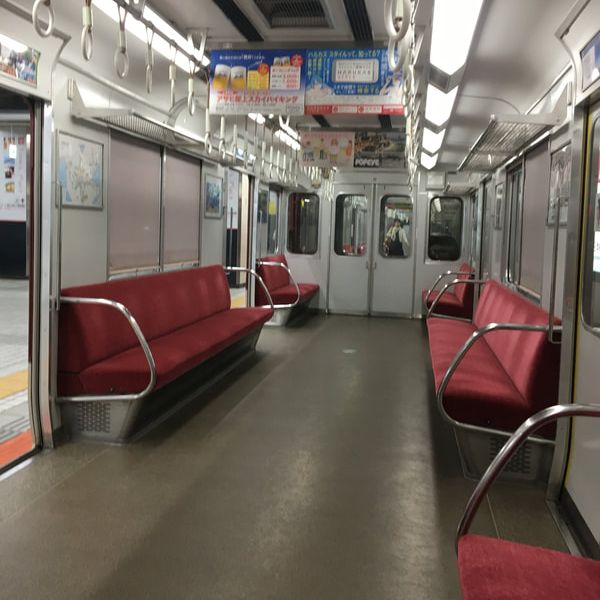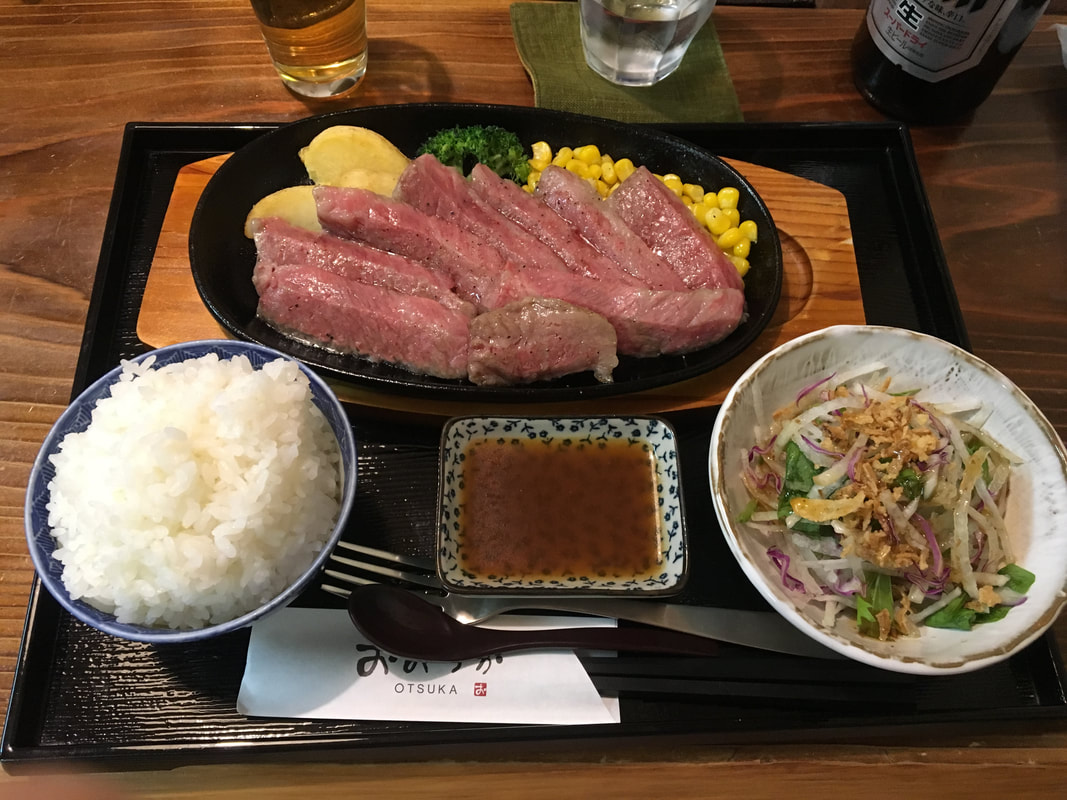|
While riding the subway or walking around town, you may stumble upon advertising for one of the many Japanese beer gardens. These beer gardens are typically found on rooftops of buildings and offer a buffet of food and drinks to customers. Most beer gardens are all you can eat and drink for a set price. Some only allow you to stay for a specific period of time (two hours is the standard). Not all beer gardens offer the same pricing, experience, or variety of consumable items. There are a few things to know before visiting a beer garden. Operating Hours and Dates Using Takashimaya Beer Garden Kiravia as an example, beer gardens are open seasonally throughout the year. Kiravia in Osaka's Namba district is open May 1st, 2017 through September 18th, 2017. Many beer gardens will have similar date ranges. They are generally open every evening for dinner. Kiravia's hours are 5:30 p.m. to 10:00 p.m. daily with the exception of opening at 4:30 p.m. on Friday. Pricing The price for beer gardens vary depending on which one you visit. Most are all you can eat and drink for around ¥3,500 to ¥4,000 ($32.00 - $37.00). Children are typically less expensive and some beer gardens offer various discounts. Kiravia charges ¥3,800 for adults, ¥1,900 for children, and ¥600 for very young children age three to six. They offer discounts on a few nights as well. Kiravia's time limit is two hours for consuming food and beverages. Food and Beverage Options Most beer gardens offer a buffet full of food options. They typically offer various Japanese dishes and other Asian cuisine. Some beer gardens offer a themed buffet that changes periodically. For drink options, most offer a specific company's draft beer along with wine, liquor, sake, and non-alcoholic beverages. All of the drinks are included with the price of admission unless stated otherwise. Location and Atmosphere Many beer gardens in cities such as Osaka and Kyoto are accessible by public transportation. They are generally located in urban settings on building rooftops. Some of the beer gardens are themed with interesting decor, lighting, and music. A quick search online will provide information and reviews for beer gardens across Japan. You can find a good review of Kiravia by clicking here. Takashimaya Beer Garden Kiravia in Osaka, Japan
One of the reasons to visit Japan is to for the amazing cuisine. There are plenty of resources available to find fantastic restaurants including those with Michelin Star status. The challenge is not finding great places for dining, but making a reservation in the first place. Not all highly rated restaurants take reservations, but there are a few ways to secure your seat. Check For Reservation Options The first step to is to see what kind of reservations a restaurant will accept. You can find out by searching online for a website, phone number, reservation portal and other relevant information. Popular restaurants can require booking months in advance. Book Online For example, Steak Otsuka in Kyoto, Japan offers online booking. They offer a simple portal to submit your reservation information directly through their website. Other places may have an email address to request one. Some restaurants will confirm online reservations closer to the date of your visit and may ask for a credit card to charge in case you do not show up. Ask Your Hotel Many hotels can call on your behalf to make a reservation at a restaurant. Try contacting your hotel in advance to ask about making a reservation for you during your stay. They can also offer suggestions and make calls while you are in Japan. Four and five star hotels are more likely to have success when booking very popular and extravagant restaurants. This is the best method for securing reservations if your hotel is willing and able to do so. Reserve by Telephone More popular restaurants only take reservation via telephone. You should have someone that can speak Japanese call on your behalf. Do not expect restaurant employees to understand non-Japanese languages over the phone. Try having a friend, relative, or hotel employee that speaks Japanese call for the best results. Make a Reservation in Person Another option is to physically visit a restaurant during their business hours and request for a reservation for later that evening or another day. Restaurants can be strict on requiring a reservation to seat patrons, but lax on when the reservation was made. However, do not expect a restaurant to take a reservation an hour or two before your desired time. If you are trying to make a reservation for the same day, try calling or visiting in the early afternoon at the latest. Show Up Early and Wait
Finally, not all restaurants take reservations. Many great restaurants in Tokyo, such as Daiwa Sushi, do not take reservations. Arriving early and patiently waiting is the only way to enjoy some of the best restaurants Japan has to offer. After being seated at a sushi restaurant in Japan, you may notice a few differences from your favorite location back home. There may be sushi offerings you have never seen, more sushi chefs than you are used to behind the counter, and a basket under your chair to hold a purse or messenger bag. One thing that may not be noticeable is the etiquette required to show respect to the chefs. Here are a few tips that will help you have a great experience. No Dunking Pieces in the Soy Sauce Dish When you dip your sushi into the soy sauce dish, make sure not to dunk or drench the whole piece. It is disrespectful to do so as the flavor of the fish can be overpowered by the soy sauce. Keep Rice Out of the Soy Sauce Dish In addition to not dunking pieces of sushi, keep the rice portion out of the soy sauce. The rice can absorb too much soy sauce causing the sushi to lose its intended taste. The best practice is to only dip the fish side of the sushi into a soy sauce dish. Additional Wasabi is Not Necessary Chefs may intentionally add wasabi under the piece of fish when making sushi. Their goal is to serve you the right flavor balance. You should sparingly need to add wasabi to a piece of sushi. You should never add wasabi to the soy sauce dish as it is seen as a sushi etiquette foul. Hold Pieces of Sushi From the Side and Not From Above When using chopsticks, you should grab the piece of sushi from the side. Holding the sushi around the rice prevents it from falling apart. It may take some practice to pick pieces up from the side and turning them over to dip the fish into a soy sauce dish. Eat Pieces in One Bite The correct sushi etiquette is to eat each piece in one bite. The rolls and pieces are generally served small enough to do so. If the piece is too big for one bite, try your best to eat in two bites to prevent the piece from falling apart. Only Order What You Will Eat It is impolite to waste food. Many times, chefs will not allow you to order additional pieces of sushi until you finish what was originally ordered. Show respect by not over ordering. Thank Your Chef If you had a great experience and meal, thank your chef before leaving. A phrase such as doumo arigatou gozaimasu (thank you very much) works well. You can practice the phrase by saying it as Doe-Mo, R-Ri-Ga-Tow, Go-Zai-Ma-Su. Himawari Zushi Shintoshin
Photos taken during lunch Vibrant billboards, neon lights, video advertisements, and trendy shop logos. These are among many of the pictorial signs seen walking the streets of a major Japanese city. Looking closer to the ground level, you may find a sign denoting a pedestrian crossing or subway entrance. However, not all signs are things you would normally see in another country or expect while sightseeing. Japan has signs for practically everything imaginable and some are more obscure than others. One focus of the Japanese culture is an effort towards safety. There are constant reminders of how to safely walk around a city or use public transportation. The great thing is that you do not need to understand Japanese to understand many safety signs. There are plenty of drawings, graphics, and examples without the use of words for citizens and tourists. Some of the safety signs you may come across are quite humorous. Beyond safety, there is a right way and wrong way to do many activities. In order to bridge the language barrier gap for tourists, directions are often given as pictorial diagrams. Many of the diagrams are comical, but they do illustrate the point well. Reading interesting signs and directions will help you stay safe, follow Japanese laws, and adhere to local customs without issue. The last thing anyone would want to do is to use a toilet incorrectly.
|
Follow me
on Instagram @card_knock_life Categories
All
Archives
July 2024
This website contains affiliate links
|













 RSS Feed
RSS Feed
